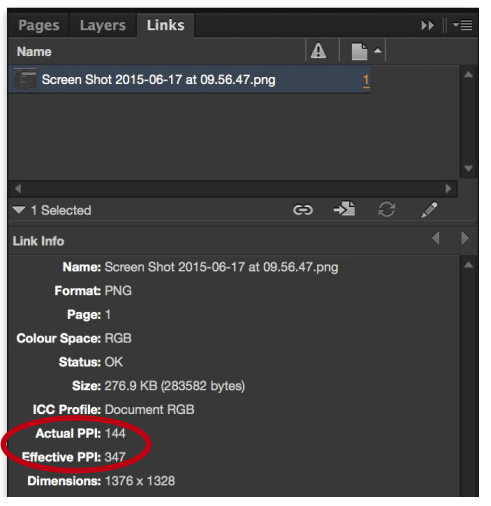How to prepare a print ready Roll, Gate or Z-Fold document in InDesign
- adobe
- advice
- artwork guide
- design
- design for print
- guide
- indesign
- Resources
- graphic design
- resource
Read the article below to download the printable PDF version
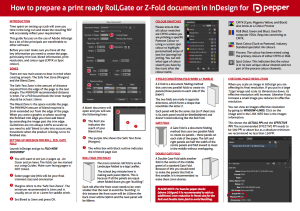
Introduction
Zones
Setting up InDesign for Roll, Zed, Gate fold
1. You will want to set just 2 pages up . An Outer and an Inner. The folds can me marked out using Guides. Make sure facing pages is NOT ticked.
2. Select page size (this will be your final trimmed size) and orientation
3. Margins refers to the ‘Safe Text Zones’. The minimum recommended is 5mm and is usually set at 10 or 12mm for saddle stitch.
4. Set Bleed to 3mm and press OK.
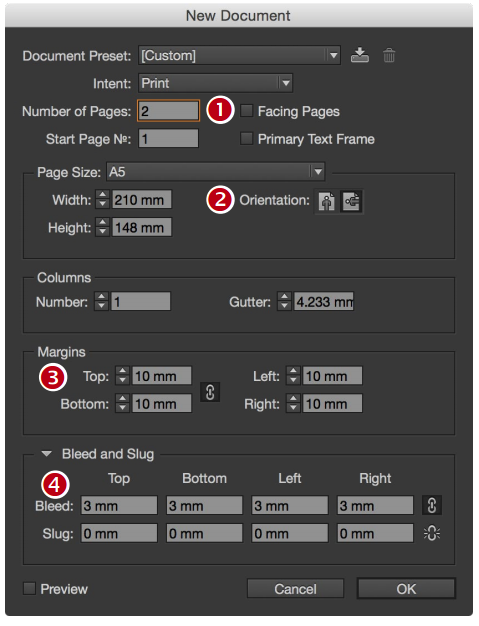
A blank document will open and you will see the following lines:
5. The Red Line indicates the reach of your Bleed Area
6. The purple line shows the Safe Text Zone (Margins)
7. The white box with black outline indicates the trimmed page size
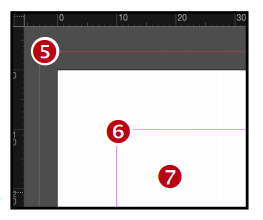
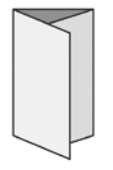 Roll FOLD (TRI-FOLD)
Roll FOLD (TRI-FOLD)
The most common roll fold is an A4 Landscape folded to a 6pp Leaflet. The school boy mistake here is making each panel 99mm. This is because if all the panels are equal when folded down you get ‘buckling”. Each roll after the front cover needs to be 1mm smaller that the next to avoid the ‘buckling’. In this instance the front cover will be 100mm the back cover will be 99mm and the next panel will be 98mm.
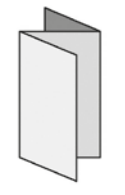
Z-Fold (concertina fold when 4+ panels)
A Z-fold is a document folding method that uses two parallel folds to create six panels (three panels on each side of the paper). The two folds are made in opposite directions, which forms a shape that resembles the letter Z. Each panel will be the same size (so if sheet size is A4 each panel would be 99x99x99mm) and doesn’t need reducing like the Roll Fold.
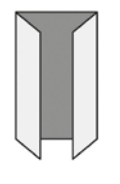 Gate Fold
Gate Fold
A Gate Fold is a document folding method that uses two parallel folds to create six panels – three panels on each side of the paper. The left and right panels are half the width of the centre panels and fold inward to meet in the middle without overlapping.
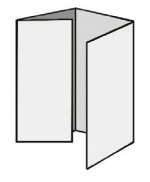 Double gate Fold
Double gate Fold
A Double Gate Fold adds another fold in the centre of the middle panel of a standard Gate Fold. Because of this you would need to make the panels that fold in first smaller. It is recommended to make them 2mm shorter.
PLEASE NOTE: For heavier paper stocks (above 200gsm) it is recommended to add an additional 1mm reduction in Panel size for the Roll and Double Gate-fold to avoid Buckling.
Swatches
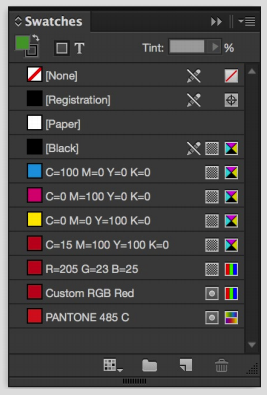 Colour Swatches Please ensure that all colour swatches are CMYK unless you are printing a specific Pantone Colour or using a custom spot colour to highlight personalised areas of text for lasering/inkjetting. You can tell what type of colour swatch you have by the icons after the colour name.
Colour Swatches Please ensure that all colour swatches are CMYK unless you are printing a specific Pantone Colour or using a custom spot colour to highlight personalised areas of text for lasering/inkjetting. You can tell what type of colour swatch you have by the icons after the colour name.
 CMYK (Cyan, Magenta Yellow, and Black) also know as 4 Colour Process
CMYK (Cyan, Magenta Yellow, and Black) also know as 4 Colour Process
RGB (Red, Green and Blue). Used for computer VDUs. Requires converting to CMYK.
Book Colour (Such as Pantone). Industry Standard specialist ink colours.
Process. The colour has been mixed using the primary colours of either CMYK or RGB.
Spot Colour. This indicates that the colour is in its own unique colour channel and not part of the process colour channels.
Checking Image Resolution
When you scale an image in InDesign you are affecting its final resolution. If you put in a large 72ppi image and scale its dimensions down, its effective resolution will increase. Likewise if you increase a small image you reduces its effective resolution. You can view an images effective resolution by going to WINDOW>LINKS. Click on the image and in the LINK INFO box is the images information. This shows the ACTUAL PPI and the EFFECTIVE PPI. The recommended EFFECTIVE PPI needs to be 300 PPI or above but as a absolute minimum we recommend no less than 150PPI.

